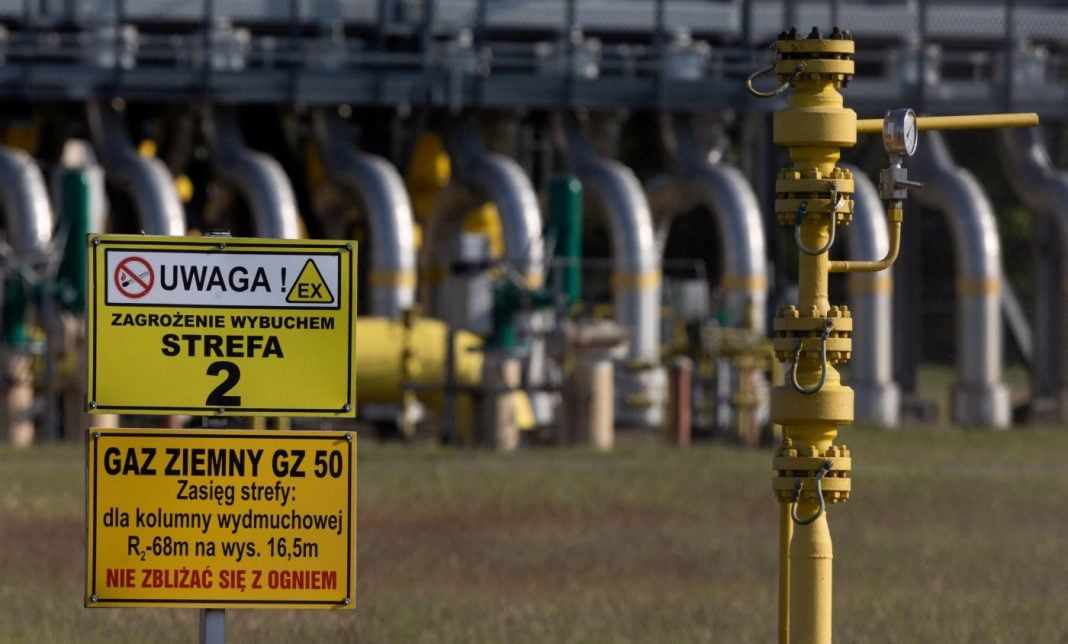The Kremlin issued dire warnings to Europe when Gazprom’s gas transit agreement with Ukraine ended. In fact, Russia has been the loser.
By Sergiy Makogon, for CEPA
Kremlin-backed propaganda peddled a series of myths about the end of Russian gas flows in January, which were echoed by some Western governments (think Slovakia) and energy think tanks. The lessons have been very different.
Instead, analysis of the impact on Ukraine, Europe, and Russia has revealed a strategic shift with profound geopolitical implications, not least for Russia, which has suffered a significant economic toll.
The first claim was that Russia would destroy Ukraine’s gas transmission system (GTS) without the presence of ongoing transit. However, Russian targeting of Ukraine’s underground gas storage facilities and production sites had already started, with seven major attacks recorded before gas flows were cut on January 1.
These attacks were part of a strategy to undermine Ukraine’s energy infrastructure and occurred regardless of the pipeline’s status. The cessation of transit did not intensify such attacks, nor did it compromise the integrity of the GTS. Ukraine’s pipelines are still functioning reliably, demonstrating remarkable resilience and technical soundness under wartime pressures.
Another persistent claim was that insufficient pressure in the GTS would disrupt gas supplies to Ukrainian cities and households. But Ukraine’s GTS has maintained operational pressure by using its network of compressor stations, a system that has long been adapted to operate without transit flows. Ukrainian cities have continued to receive gas without interruption.
A third myth suggested that gas prices for households and industry in Ukraine would skyrocket, but household gas prices have remained stable, protected by regulatory mechanisms and domestic gas production. For industrial consumers, while tariffs from the GTS Operator did increase, the changes accounted for only about 5% of the overall price fluctuation — a far cry from the catastrophic hikes some analysts predicted.
While Ukraine lost approximately $0.8bn in transit fees, this loss was dwarfed by the approximately $6bn in annual export revenue lost by Gazprom. These were funds that paid for the Kremlin’s military operations against Ukraine, making the trade-off strategically justifiable.
Fears of gas supply disruptions in Central and Eastern Europe — including Slovakia, Austria, and the Czech Republic — were similarly overstated. These countries have gradually diversified their energy sources and, with support from the European Commission, invested in new interconnectors, liquefied natural gas (LNG) terminals, and reverse-flow capacities.
As a result, they now have more reliable suppliers. European gas prices have remained generally stable, with occasional fluctuations linked to non-Ukrainian factors, including cold weather, renewable energy output, heightened demand in Asia, and security tensions in the Persian Gulf.
Ukraine’s continued transit of Russian gas after the 2022 full-scale invasion bought valuable time for Europe, allowing it to develop alternative delivery routes and align internal energy strategies. This cooperative and forward-looking approach, led by the European Commission and embraced by key member states, has ensured a seamless transition since January 1.
Threats from Slovakia about disrupting electricity or goods transit to Ukraine in retaliation for the gas cut-off also failed to materialize. While there were political rumblings in early 2025, these were quickly diffused by diplomatic engagement.
At the same time, the end of gas transit has dealt a significant blow to Russia’s energy sector, particularly Gazprom, which is a financial and geopolitical instrument of the state. The $6bn in lost revenue was not only an economic setback but also a reputational one, as its reliability as an energy partner was further eroded.
Now under financial strain, the company is seeking government support to stay afloat. In response, Moscow has raised domestic gas prices, first for households and soon for industry, which contributes to inflationary pressure.
Gazprom has also suspended dividend payments to the state, and planned tax cuts for the company will further shrink federal revenues, worsening the Kremlin’s fiscal challenges.
An estimated 60 billion cubic meters of gas now remain in storage, unable to be exported due to limited pipeline access and mounting international sanctions on Russian LNG. This bottleneck is a clear indication that the Kremlin overestimated its ability to maintain energy leverage over Europe.
Western policymakers have received an important lesson: With adequate preparation, unity, and resolve, the weaponization of energy by authoritarian states can be neutralized. The perceived economic and security costs of breaking free from dependency on aggressor nations are often exaggerated, while the strategic and moral benefits are significant and enduring.
This experience must now inform the next phase of energy disentanglement: Russian oil. The southern branch of the Druzhba pipeline continues to deliver Russian crude through Ukraine to Hungary and Slovakia, generating another $6bn a year for Moscow.
This flow persists due to exemptions from EU sanctions granted exclusively to these two countries, ostensibly on the grounds of energy security, although both have Kremlin-friendly governments. Close scrutiny shows the exemptions are political. Alternatives such as the Croatian Adria pipeline could meet demand, and logistical adjustments could facilitate a full phase-out of Russian crude.
Simply halting the Druzhba pipeline flow will not be enough. Russia has already built up a shadow fleet of tankers operating under flags of convenience and opaque ownership structures to bypass sanctions and export oil via sea transfers.
If this alternative route remains open, pipeline sanctions alone will not be effective. Ukraine must take decisive steps to end oil transit through its territory, and the US and EU must escalate enforcement of maritime sanctions (The Trump administration now appears to be considering exactly this).
This includes lowering the price cap threshold, targeting shipping companies that facilitate sanctions evasion, and leveraging satellite and insurance data to disrupt illicit oil flows.
The political will and international cooperation that defused Gazprom’s influence must now be channeled toward dismantling the Kremlin’s oil revenues. The strategy that broke Russia’s gas dominance provides a clear blueprint, and applying this strategy to oil is an urgent strategic imperative.
Energy independence from authoritarian regimes is a pathway to peace, sovereignty, and long-term stability.
By Sergiy Makogon, for CEPA
Sergiy Makogon is a Non-resident Senior Fellow at the Center for European Policy Analysis (CEPA.) He is a seasoned executive and energy expert with over 20 years of expertise in the Ukrainian and Central and Eastern European gas markets, as well as European security.
Europe’s Edge is CEPA’s online journal covering critical topics on the foreign policy docket across Europe and North America. All opinions expressed on Europe’s Edge are those of the author alone and may not represent those of the institutions they represent or the Center for European Policy Analysis. CEPA maintains a strict intellectual independence policy across all its projects and publications.





